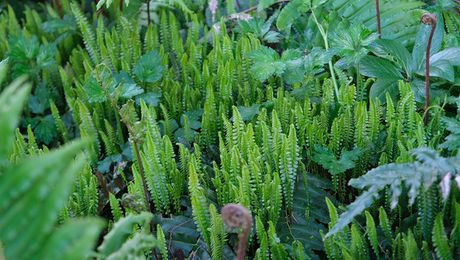
For ages, people have been trying to find new and better ways of getting the nutrients needed to live a healthy and energized life. This pursuit has led to the development of many pills, supplements, powders and more! One of the best ways to pursue a healthy life is by starting with clean and nutrient-dense foods. Eating healthy isn’t all about counting calories, but rather the value individual foods provide the body for energy and healing. Living and nutrient-dense foods like microgreens and sprouting seeds are the perfect addition to anyone’s diet as a rich source of antioxidants, dietary fiber, and a host of other benefits to the digestive and immune systems. When sprouts and microgreens are regularly consumed, they help cleanse, rejuvenate and energize the body without unnecessary processing.
Living foods are those that are not only beneficial for their nutritional content, but the activities they support within the body through antioxidants and enzyme activity. These foods directly aid the digestive system by enabling nutrient absorption and reducing inflammation throughout the body. Both sprouts and microgreens are considered living foods. The antioxidant activity of popular sprouting and microgreens seeds has been linked to eliminating waste molecules called “free radicals.” Free radicals can lead to cell damage and diseases such as cancer. There are a number of antioxidants linked to different plant types. To access the greatest array of nutrients and antioxidants, it is important to consume a balanced and diverse diet. When it comes to sprouts and microgreens, the most popular plants grown are brassicas, legumes, root vegetables and leafy greens. While plants like tomatoes, cucumbers and squash are not typically grown as microgreens or sprouts due to their undesirable flavor, other plants can surprisingly provide fruit-like flavors at the microgreen stage. One such example is the similarity borage microgreens have to the refreshing juice of cucumbers.
Microgreens are plants grown just to the point they develop cotyledon leaves. These leaves are developed from nutrients stored within the seed rather than the soil. When consumed at this stage, vegetables can offer up to 40 times the amount of nutrients as their mature counterparts can. Because microgreens have started developing leaves, they also have a greater concentration of chlorophyll and carotenoids than sprouts do. These compounds are beneficial in preventing and reversing diseases like diabetes because of the many components the body can break them down into.
Carotenoids are a specific type of antioxidant found in bright yellow, red and orange-pigmented foods. These also make colorful microgreens like amaranth, purple radish, beets and rainbow chard popular for both their attractive appearance and nutritional contents. Specific varieties, such as Red Garnet Amaranth, are especially desirable for the unique vibrance they display. To achieve this type of bright hue, it is important to utilize grow lights to elicit the pigment response triggered by the presence of light.
Sprouts are very similar to microgreens, as their nutrients are also sourced from within the seed. They are seeds that have germinated and have an emerging root. Sprouts are known to have a greater concentration of antioxidants than microgreens while also containing vital amino acids, pectins and sugars. While these two products are often confused with each other, sprouts are ready to eat much faster and require fewer supplies to get started. The only things required to sprout are seeds, a container, and water. Mason jar sprouting kits are often favored over larger trays because they take up minimal kitchen space and are easily transportable for those who prefer to live life on the go. They also allow for a variety of seeds to be grown at the same time for a diverse set of options when preparing daily meals. In comparison, microgreens require either a soil-based or hydroponic growing medium, containers or trays, water and light.
With most people not consuming the recommended amount of vegetables each day, it is prudent to pay attention to the nutritional value of the foods being consumed. Microgreens and sprouts contain the vitamins, antioxidants and fibers needed for healthy brain and body function. Start elevating everyday foods by mixing in sprouts or microgreens in both savory and sweet, hot and cold, or homemade and prepared meals. With both microgreens and sprouts ready to eat in a matter of days, there is no better time than now to start a living food experience. Learn more: trueleafmarket.com.
Ashleigh Smith is the managing editor at True Leaf Market with a bachelor’s degree in horticulture from Brigham Young University – Idaho. True Leaf Market is a nationally certified organic, non-GMO seed and horticultural company based in Salt Lake City, Utah. The True Leaf Market staff specializes in supplying a large selection of conventional, heirloom, and organic seeds to home gardeners everywhere. Learn more about our seeds, supplies, and other growing ideas: trueleafmarket.com.
This post was sponsored by True Leaf Market.
Fine Gardening Recommended Products

Spearhead Shade Gardening Shovel with Steel-Reinforced Fiberglass Handle
Fine Gardening receives a commission for items purchased through links on this site, including Amazon Associates and other affiliate advertising programs.

VegTrug Classic Cold Frame
Fine Gardening receives a commission for items purchased through links on this site, including Amazon Associates and other affiliate advertising programs.

A.M. Leonard Deluxe Soil Knife & Leather Sheath Combo
Fine Gardening receives a commission for items purchased through links on this site, including Amazon Associates and other affiliate advertising programs.


















Comments
Log in or create an account to post a comment.
Sign up Log in